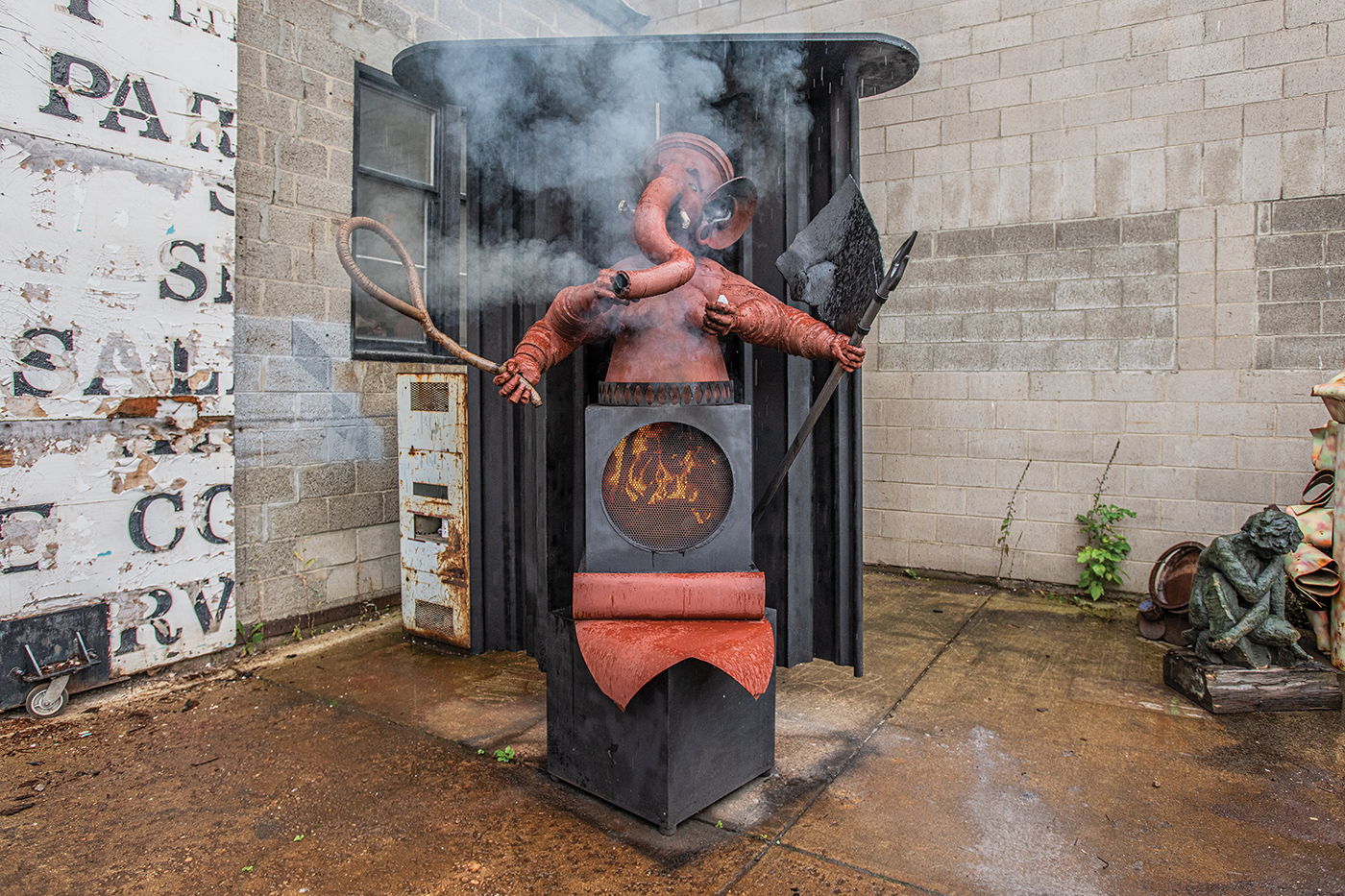The Venn diagram of art and controversy has more than a little overlap.
Few artists actively seek to cause strife with their work, but over a long enough career, it happens.
Ryan McCourt went through a bout of controversy 12 years ago, when his sculpture, “The Reawakening of Ganesha,” was removed from the Shaw Conference Centre after about 700 conservative members of a local Hindu mandir (temple) signed a petition and made a request directly to then mayor Stephen Mandel to take it (and three other Ganesha statues) down. Surprisingly, their problem wasn’t that the elephant god was decapitated and its head lay between its feet, but that the pillar on which it leaned had breasts. And if you looked up under the skirt of another sculpture, “Destroyer of Obstacles,” it had genitals.
Once the sculptures came down, they were transported to Cold Lake, but not all of them made the trip, because the truck driver went under a too-low bridge. The irony of the “Destroyer of Obstacles” being destroyed by an obstacle isn’t lost on McCourt. While the whole ordeal was unpleasant, it didn’t phase him. “I’m not going to worry about people who go around looking up skirts then getting shocked at what they see.”
The truth is that the Hindu aesthetic and philosophy spoke to McCourt, a member of 2011’s Top 40 Under 40, and inspired almost a dozen more Ganeshas. Most are small, but his most recent, “Hot Ganesha,” which he started when the “Reawakening” controversy was underway, and was recently sold to a private resident, is almost 10 feet tall and steaming mad. Or it looks that way, when its fire-pit base (where genitals would be) is lit and smoke billows out its nose and ears.
The welded, black and red painted steel sculpture has the common Ganesha elements — a rope, pulling us toward our goals and removing the obstacles; a trident, cutting off attachment from material desire; a treat, rewarding spiritual development; and a sacrificial, broken off piece of tusk — and its inferno infrastructure is a fiery refutation of artistic censorship.
Or it’s just a really cool fireplace. Both views would fit well within the Venn diagram of dualistic, Hindu philosophy. “Opinion and debate is a part of art, a part of the fun of living with other people,” McCourt says. “I’m happy to argue about it, and maybe I’ll be wrong. You could certainly take a poetic reading as this being a statement on censorship, or maybe it just makes you warm, and that’s OK too.”
